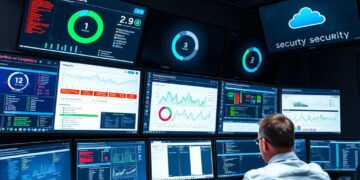Nowadays, with everything happening so fast and people being so connected, an organization’s reputation is at greater risk than before. If a company is mentioned negatively in the media, it can quickly lose people’s trust, discourage investors and make customers lose interest. For this reason, companies are now placing more attention on managing reputational risks. Adverse media screening software plays a key role in helping to handle this challenge as part of a company’s risk and compliance strategy.
What Does Adverse Media Screening Software Do?
This software is used to look for and track unfavorable news or articles about individuals or organizations found in public places. Sources may include news websites, blogs, databases for regulations, legal papers and social media. The aim is to identify possible issues such as accusations of fraud, money laundering, terrorism financing or unethical practices, so they do not turn into major problems for the company.
This process, often referred to as adverse media screening, is integral to Anti-Money Laundering (AML), Know Your Customer (KYC), and Enhanced Due Diligence (EDD) programs. The software handles the search, analysis and grouping of content that could be risky which is much faster than using humans.
Reputational Risk Is Important for Many Reasons.
When a company develops a bad reputation in the public eye, whether the negative image is true or not, it may find it difficult to work or gain support from others. It may occur when a business commits a data breach or violates regulations or when it deals with risky suppliers, customers or partners.
Sometimes, companies suffer from a damaged reputation because they failed to notice or act on early signs of trouble. It is in this situation that adverse media search becomes very important.
The Importance of Adverse Media Screening in Spotting Risk
By using adverse media screening software, businesses can monitor the news for any signs of damage to their reputation. This is how it works in real life:
1. The ability to monitor and be alerted in real time
Traditional ways of watching the media involved checking it occasionally by hand. Unlike before, today’s adverse media screening software scans a vast number of sources in real time. If there is fresh negative news about the company or person being tracked, the system alerts the compliance team instantly.
2. In addition, the system includes Contextual Search and Risk Categorization.
Advanced platforms use AI and natural language processing (NLP) to not only scan for keywords but also understand context. As a result, the system can tell apart similar-sounding mentions and only classify real negatives as adverse feedback. A common term may be used in different articles, but the software can identify and separate the ones connected to financial crime, litigation or regulation.
It is not limited to simple matching and gives exact results linked to set risk groups, including corruption, fraud and violating sanctions.
3. Screening Should Be Part of Onboarding and Keeping an Eye on the Company
During the AML/KYC process, organizations usually do adverse media screening when customers are onboarded. However, risks to a company’s reputation can happen at any moment. For this reason, organizations must always carefully review the media. Using the right software, companies can regularly or as needed review their clients, vendors or partners to catch any new risks.
4. You can customize both the scoring and the type of reports you use.
Most screening platforms help organizations determine the amount of risk they are willing to accept. If the custom risk scoring for a hit is very high, the business may investigate further or stop any relationships with the company involved. Additionally, having audit-ready reports helps organizations comply with rules and avoid sanctions from regulators.
There Is More to Gain Than Just Meeting Requirements. Even though adverse media screening software often relates to meeting regulations, it offers much more value.
- Safeguarding the Brand: Spotting and addressing issues with risky partners preserves the brand’s good reputation and trust among customers.
- Stakeholders like companies that act to avoid risks, so the process of screening demonstrates effective governance.
- Avoiding risky third parties in operations helps to prevent problems in supply chains, legal issues and harm to a company’s reputation.
Issues Involved in Adverse Media Screening
While adverse media screening is beneficial, it still encounters some issues. Among the main problems are:
- When a system has a high rate of wrongly marked content, it wastes analysts’ efforts.
- Global companies have to handle content in various languages and local dialects.
- Filtering and prioritizing a huge amount of media is necessary because of the large volume of data used in multimedia.
- The best adverse media screening software uses machine learning, customizable filters and is multilingual, so teams are kept up to date without being flooded with irrelevant information.
The Possible Future of Adverse Media Monitoring
With more attention being paid by regulators and the public, adverse media screening will play an even bigger role. It is predicted that in the future, improvements will be made to:
Using past media trends to predict what might damage the company’s reputation in the future.
Integrating Social Media Further: Keeping an eye on informal sites for the first signs of problems with the company’s reputation.Integration of Adverse Media Adding the ability to search for adverse media into KYC, CRM and ERP systems.
Conclusion
Because reputation can change so quickly nowadays, companies should be cautious, take action and make sure they have the correct tools. Using this software, organizations can automatically search and review negative news about their business to detect possible risks to their reputation.
When businesses use effective adverse media screening and monitoring, they fulfill the rules and protect their most important asset: their reputation.













